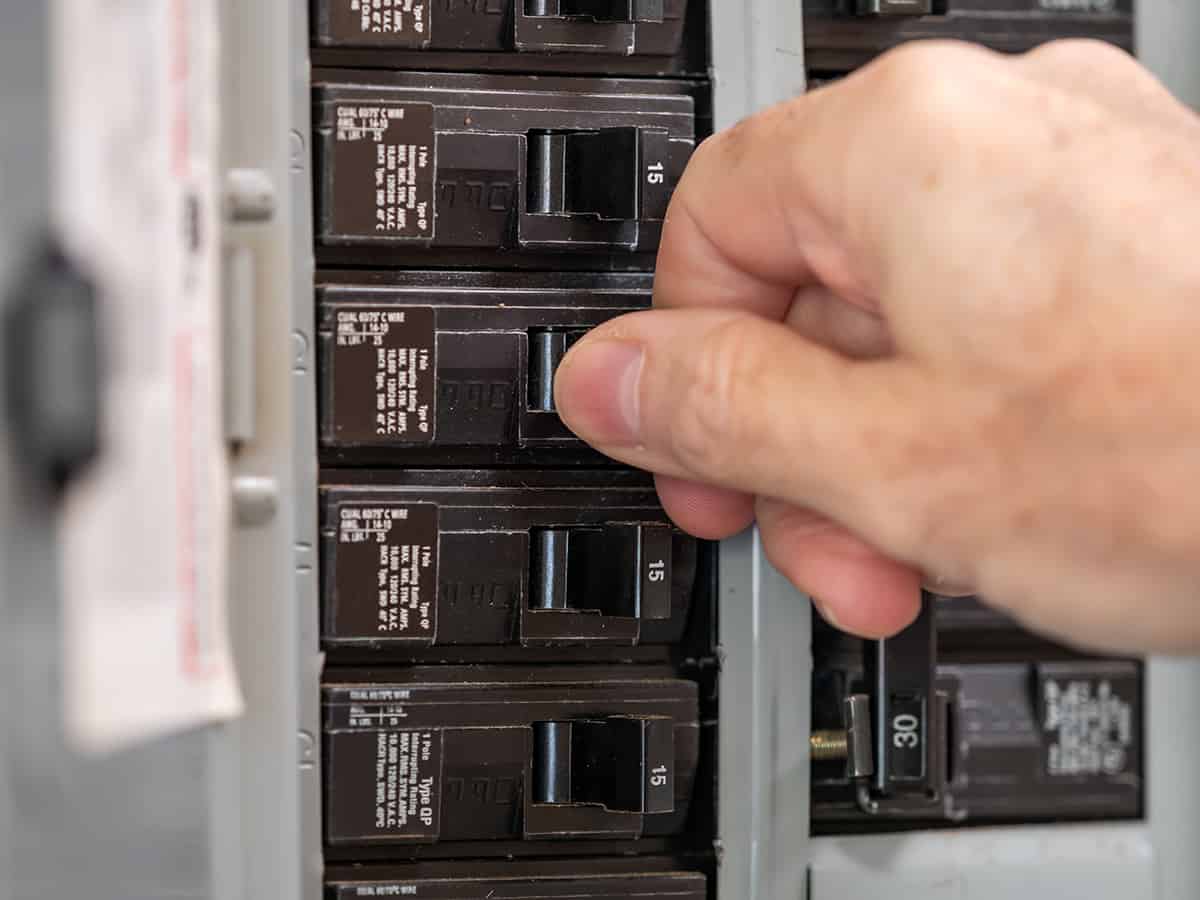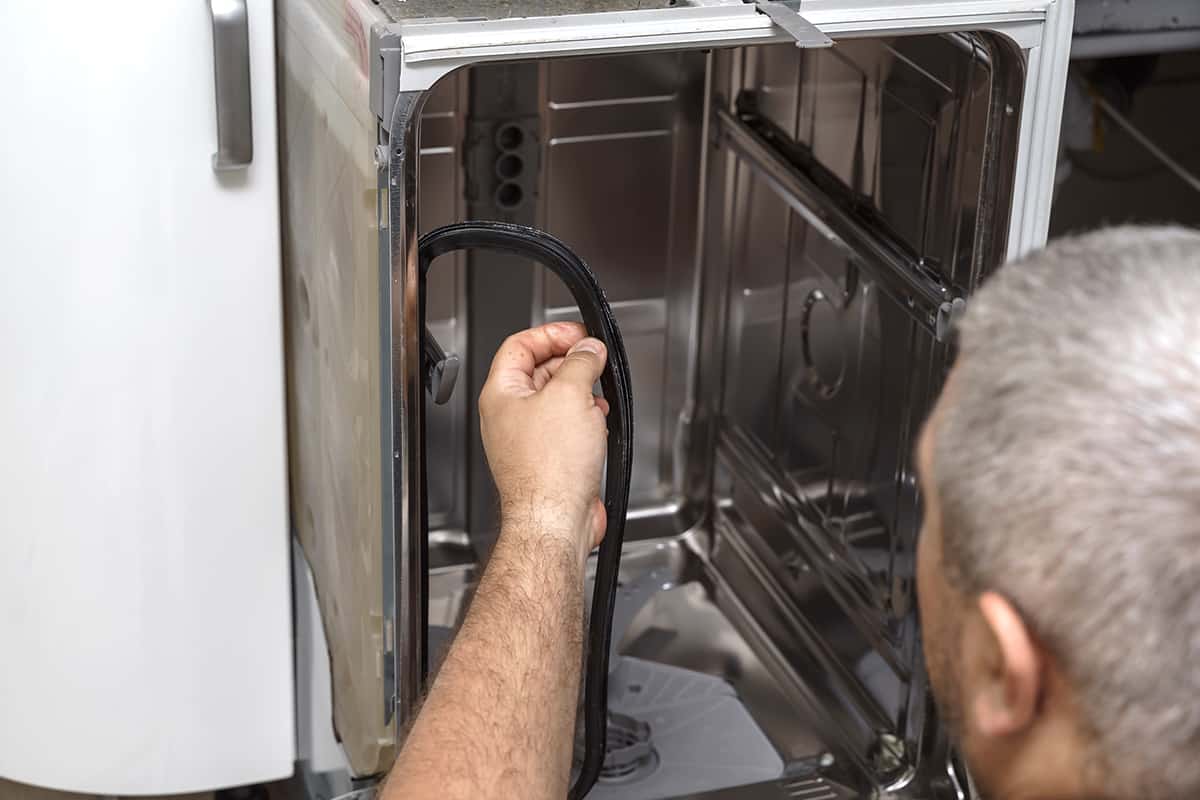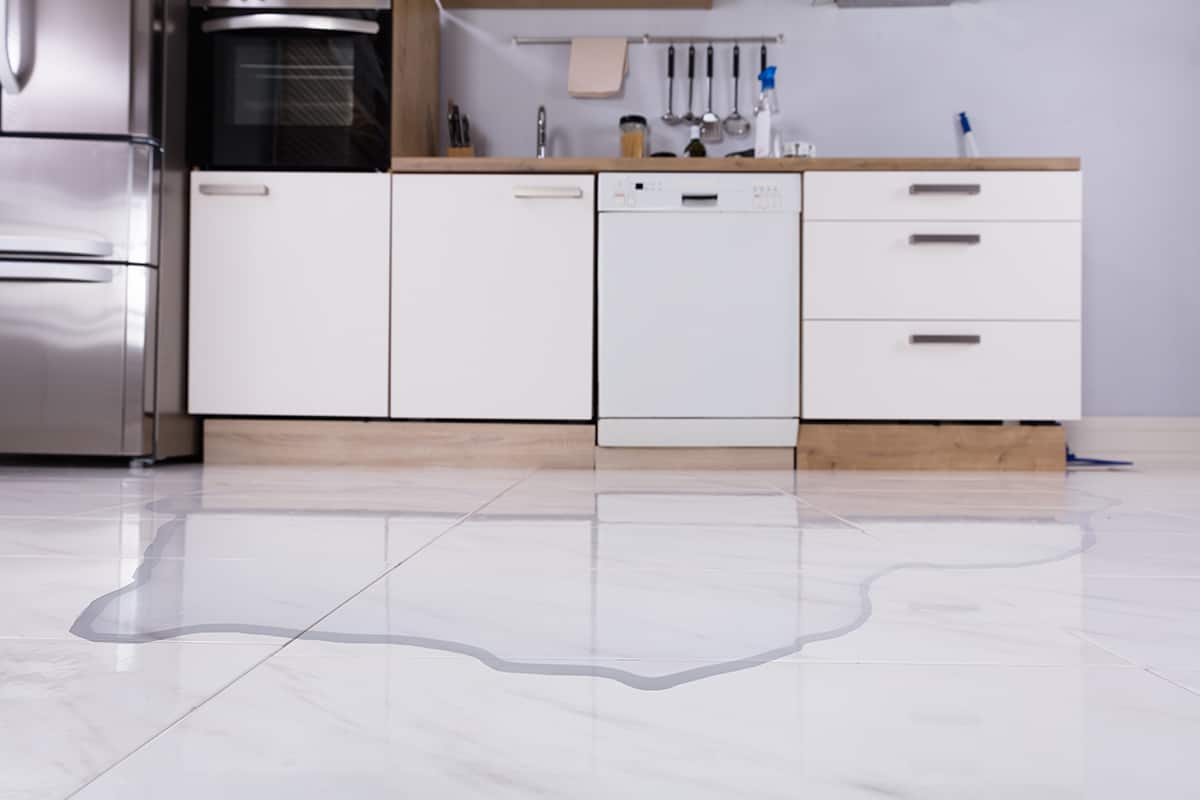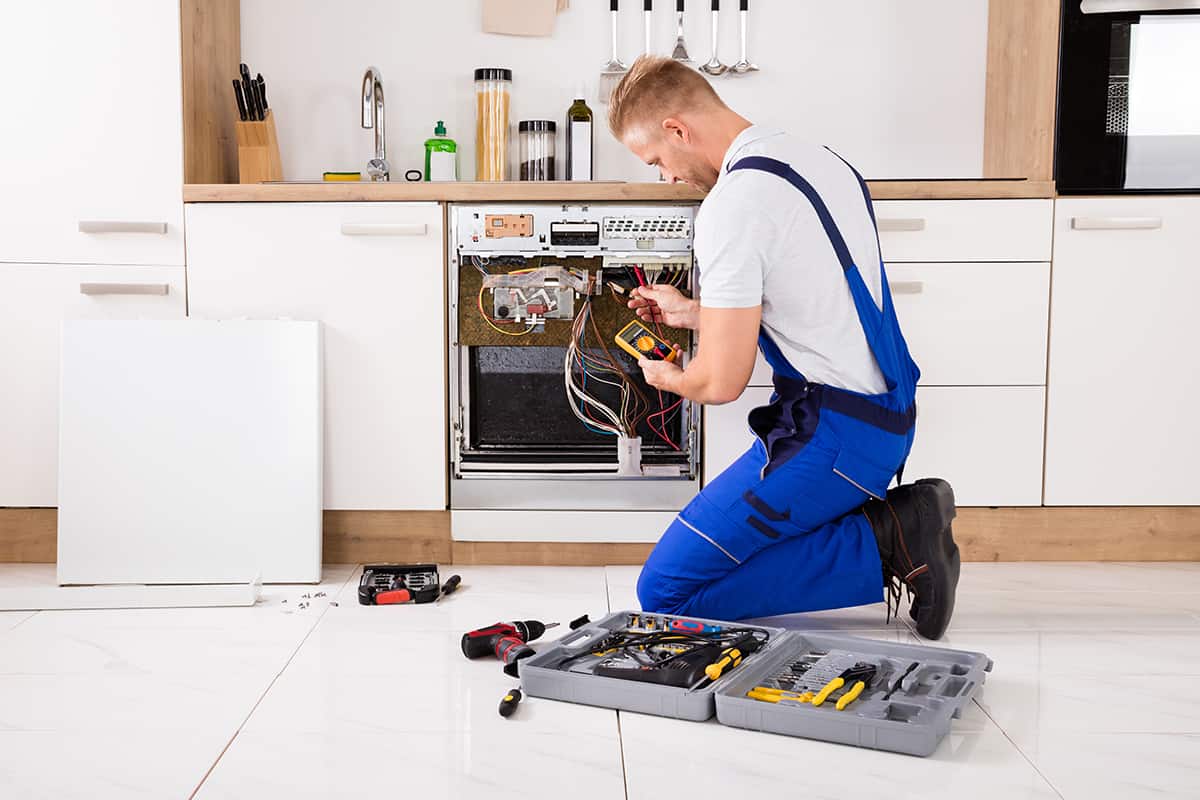Dishwashers are an essential part of our daily lives, making it easy to clean our dishes and save time. However, sometimes dishwashers can cause problems, like tripping the breaker in your home. A tripping breaker can be frustrating and even dangerous if not handled properly.
If your dishwasher continues to trip the breaker, it could be due to any of the following causes:
- Electrical overload
- Wiring issues
- Faulty dishwasher components
- Water-related issues
- Ground Fault Circuit Interrupter (GFCI) problems
In this article, we’ll explore the common causes of a dishwasher tripping the breaker and provide you with solutions to fix these issues.
An Intro to Breakers and Dishwasher Circuits
Breakers are an important part of your home’s electrical system. Their job is to protect your home from electrical problems that can lead to problems such as fires.
They do this by stopping the flow of electricity if there’s too much going through a circuit. Dishwashers, like other appliances, have their own circuits to make sure they work well and safely.
Purpose of breakers

Breakers act like a safety net for your electrical system. If too much electricity flows through a circuit, the breaker will “trip” or switch off. This stops the flow of electricity, protecting your home from potential damage or fire.
Dishwasher circuit components
A dishwasher circuit is made up of several parts, including the breaker, wiring, and the dishwasher itself. These parts work together to make sure your dishwasher runs smoothly. When one part isn’t working right, it can cause the breaker to trip.
Common breaker ratings for dishwashers
Breakers are rated by how much electricity they can handle before tripping. If you’re wondering how many amps a dishwasher uses, the answer is most dishwashers need a breaker rated for 15 or 20 amps.
This rating helps make sure the dishwasher gets enough power while also keeping your home safe from electrical problems. If your dishwasher is tripping the breaker, it’s important to check if the breaker rating is correct.
Determining the Cause of Your Dishwasher Tripping the Breaker
If your dishwasher is causing the breaker to trip, it can be challenging to figure out the exact reason. However, you can follow these steps to help identify the cause and fix the issue.
- Check for recent changes—Think about any recent changes you’ve made, like adding new appliances or making adjustments to your electrical system. These changes might be related to the tripping breaker.
- Inspect the dishwasher—Look for visible signs of damage or issues, such as water leaks, burnt wires, or damaged components. These problems could be causing the breaker to trip.
- Reset the breaker and GFCI outlet—Turn off the dishwasher, reset the breaker and the GFCI outlet (if applicable), and then turn the dishwasher back on. If the breaker trips again, it’s a sign that there’s an ongoing issue.
- Test the dishwasher on a different circuit—If possible, plug the dishwasher into another circuit to see if the problem persists. If the breaker still trips, it’s likely that the issue is with the dishwasher itself.
- Consult the user manual—Check the dishwasher’s user manual for troubleshooting tips and guidance on common issues. This can help you identify the cause of the breaker tripping.
Dishwasher Keeps Tripping Breaker – Causes & Fixes
Now that we got the basics out of the way, we can focus on the more important questions—why does your dishwasher keep tripping the breaker and what can you do to fix it?
1. Electrical overload
Electrical overload occurs when there is too much electricity flowing through a circuit. This can put a strain on your home’s electrical system and cause the breaker to trip. There are a couple of common reasons for electrical overload related to your dishwasher.
- Incorrect breaker rating—Using a breaker with the wrong rating for your dishwasher can cause an overload. If the breaker is not able to handle the amount of electricity the dishwasher requires, it will trip.
- Too many appliances on one circuit—Sharing a circuit with multiple appliances can lead to an overload if they all draw power simultaneously. This can also result in the breaker tripping.
Solutions for electrical overload
- Circuit reconfiguration—Consider having an electrician reconfigure your home’s electrical circuits, ensuring your dishwasher has its own dedicated circuit. This can help prevent overloading from too many appliances sharing the same circuit.
- Upgrading the breaker—If the breaker rating is too low for your dishwasher, consult with an electrician about upgrading it to a higher rating. This will allow the dishwasher to draw the necessary power without causing an overload and tripping the breaker.
2. Wiring issues

Faulty wiring can cause your dishwasher to trip the breaker. Two main types of wiring issues can lead to this problem: loose connections and damaged wires.
- Loose connections—If wires are not securely connected, they can create unstable electrical paths. This can lead to electrical issues and cause the breaker to trip.
- Damaged wires—Wires that are frayed, cracked, or corroded can also cause electrical problems. Damaged wires can create short circuits, which can trip the breaker.
Solutions for wiring issues
- Visual inspection—Turn off the power to your dishwasher and carefully inspect the wiring for any visible signs of damage or loose connections. If you find any issues, fix the connections or replace the damaged wires.
- Electrical testing—If you’re not sure about the condition of the wiring, you can use a multimeter or voltage tester to check for problems. Be cautious and consider hiring a professional electrician if you’re not confident in your ability to work with electrical systems safely. Fixing wiring issues can help prevent the breaker from tripping and keep your dishwasher running smoothly.
3. Faulty dishwasher components
Dishwashers have many parts that work together to get your dishes clean. Sometimes, these parts can break or malfunction, causing the breaker to trip. Let’s take a closer look at some of the main components that might cause this issue.
- Dishwasher motor—The motor powers the dishwasher’s spray arms and pump, helping to clean your dishes. Over time, the motor can wear out or become damaged, causing it to draw more electricity than it should. This can result in the breaker tripping.
- Heating element—The heating element is responsible for heating the water and drying the dishes. If it becomes damaged or starts to malfunction, it can cause a short circuit, leading to the breaker tripping.
- Control board—The control board is like the dishwasher’s brain, controlling all its functions. If the control board has a problem or fails completely, it can cause various issues, including the breaker tripping.
- Door latch and switches—The door latch and switches ensure that the dishwasher only operates when the door is closed securely. If these components are damaged or malfunctioning, the dishwasher may not work properly, and the breaker could trip.
Solutions for faulty dishwasher components
- If you suspect a motor issue, it’s best to have a professional examine it and determine if it needs to be replaced.
- You can check the heating element for visible damage or signs of burning. If you find any issues, it may be necessary to replace the heating element to fix the problem.
- Diagnosing control board issues can be complex and may require the help of a professional. They can determine if the control board needs repair or replacement.
- Inspect the door latch for any signs of damage, and check if the switches are functioning correctly. You may need to replace the faulty parts to resolve the issue.
4. Water-related issues

Water and electricity don’t mix well, so when water-related issues arise in your dishwasher, they can cause the breaker to trip. There are two primary concerns when it comes to water-related problems:
- Water leaks—Leaks can occur due to damaged hoses, loose connections, or cracked components in your dishwasher. When water comes into contact with electrical parts, it can create short circuits and trip the breaker.
- Flood prevention mechanisms—Some dishwashers have built-in flood prevention features that shut off the appliance if water levels get too high. These mechanisms can also trigger the breaker to trip.
Solutions for water-related issues
- Identify the source—Start by locating the source of the water leak or the cause of the flood prevention mechanism’s activation. You might need to check hoses, connections, and other dishwasher components for damage or wear.
- Repair or replace—Once you’ve identified the issue, you can tighten loose connections, replace damaged hoses, or fix any other components causing the problem. This will help prevent water from coming into contact with electrical parts and keep your dishwasher from tripping the breaker.
5. Ground Fault Circuit Interrupter (GFCI) problems
GFCI outlets monitor the flow of electricity and quickly shut off power if they detect an imbalance, reducing the risk of electrical shock. While they provide an essential safety measure, they can also be sensitive and prone to tripping.
There are two types of GFCI tripping—false tripping, which occurs when the GFCI trips without an actual electrical problem, and genuine tripping, which happens when there’s a real issue.
Solutions for GFCI problems
- Resetting the GFCI—Press the “Reset” button on the outlet to restore power. If the outlet continues to trip, there may be an underlying issue that needs further investigation.
- Replacing the GFCI—If false tripping persists, consider replacing the GFCI outlet with a new one. However, if genuine tripping occurs, you should investigate the root cause, as it may indicate a more serious problem with your dishwasher or electrical system. In this case, consulting a professional electrician is recommended.






